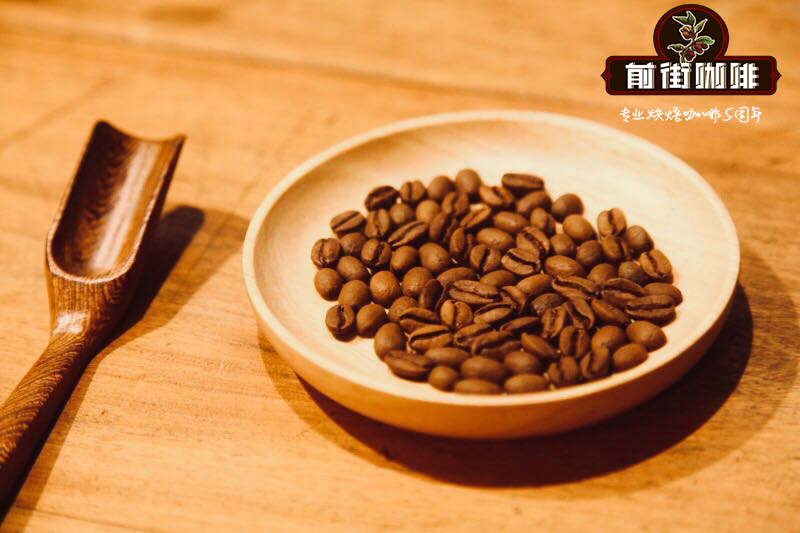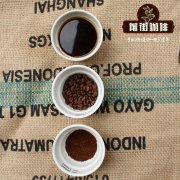What is coffee bean grading coffee country of origin grading system boutique coffee

Professional coffee knowledge exchange more coffee bean information please follow the coffee workshop (Wechat official account cafe_style)
What is the grading of coffee beans?
Usually when we look at individual coffee, we often see one or two acronyms in the long name, such as PB, AA, G1, etc., which actually represent the grade given to coffee beans by the producing country.
There is no universal coffee bean grading system on this earth.
The purpose of grading is to provide a rough benchmark at the time of trading. It must be noted that there is no universal coffee bean grading system (draw the bottom line) on this earth. In fact, the name and basis of the classification is decided by each producing country. There are a few points that we must pay special attention to when discussing the classification system:
The standard of grading varies from country to country.
In some countries, the name of the grading system is the same, but the actual definition is not quite the same.
It is difficult to make cross-border comparisons because the systems are different and the characteristics of each country are different.
Grading is only a reference and is not the only or most critical factor affecting flavor.
What is the basis for grading?
If we say that the origin, treatment, and roasting of coffee beans belong to the category of "people's opinions on benevolence", then "grading" is the objective gene of raw coffee beans, telling you whether a bean is good or bad. it is also a sharp weapon that can help you pick good beans!
Green Coffee Bean Grading
Coffee country of origin grading system
Coffee beans are graded differently in coffee producing countries around the world-according to the number of defects (rate), by altitude, by bean size, and by treatment.
Graded according to the number of defective beans
This is the earliest method of grading coffee. The identification method is to randomly take 300g samples and put them on black paper (black paper can best avoid reflection) to find out the defective beans, including black beans, pebbles, broken beans, insect beans, sour beans, peels, shell beans and so on.
The expression of grading varies from country to country, for example, Brazil is NY2,NY3 (but Brazil is not graded separately by defective beans, which will be described in more detail later), Indonesia and Ethiopia use G1memG2G3. To show.
Representative country: Ethiopia
Esser's coffee beans are divided into five grades-G1-G5, and "G" stands for Grade. Raise the chestnut:
G1 means that there are less than 3 defective beans per 300 grams of raw beans.
G2-4-12
G3-13-25
G4-26-45
G5-46 and above
Highlight:
1) Ethiopia is not graded by size
2) G1 and G2 generally belong to the grade of washed beans, while G3, G4 and G5 belong to the grading of sun-cured beans.
Generally speaking, beans of the two grades of G4 and G5 cannot be sold as individual coffee. We call them "commodity beans".
Question1: is there no grade of G1 or G2 for sun beans?
A: yes! Because the sun treatment is highly dependent on the weather, there are more uncontrollable factors than water washing. So G3 is more sun-dried beans. However, there will still be very few G1 and G2 sun beans.
Summary:
Don't judge heroes by their size!
G1 and G2 are selected in water washing, and G3 is also good in the sun.
When you run into the sun G1 or G2, do it when it's time to do it!
Classify according to the size of legume
This grading method is the most popular because the beans with high grades can be seen clearly. The specific method is to classify the mesh with holes, the mesh has different specifications, the mesh is calculated in 1x64 inches, if the diameter of the mesh is 18x64, it is expressed as 18 mesh, and so on. In the screening process, coffee beans are placed on a sieve and rolled back and forth by machine or manually. Beans smaller than the mesh fall and are removed. After layers of screening, the grades of coffee beans are divided. On behalf of Kenya, Tanzania, Papua New Guinea, Yunnan, China and so on.
Representative country: Kenya
Kenyan beans are loved by many people, not only because they are delicious, but also because they are so big! The "AA" in Kenya AA is the grade of Kenyan coffee beans washed with water, which is usually divided into nine levels--
Washed beans:
E (elephant bean), PB (round bean), AA, AB, C, TT, T
Sun dried beans:
MH (soybean), ML (adzuki bean)
Highlight:
The most common ones on the market are PB, AA and AB in Kenya.
AA+, which is between PB and AA, is a micro-batch with outstanding flavor and few defects in the allowed AA. This is not casually added by yourself!
Summary:
Kenya's beans are so big.
PB, AA, drink up!
Special representative country: Colombia
Colombia, the country of origin of South American coffee, has always been famous for its mild taste and excellent sense of balance. In Costa Rica, coffee beans are also graded according to the size of beans, but not represented by AA.
Columbia grade-Supremo super class, Excelso preferred grade. The former is bean size 17, which is generally high-quality washed Arabica beans. Supremo Screen 18 + refers to the fine beans above 18.
Highlight: the preferred level of Excelso will change according to the export region, the size of beans will also change, such as:
Exported to Germany, Excelso-Klauss, beans 16.5
Exported to France, Excelso-Europa, Doumu 15
Export to Nordic, Excelso-Scandinava, Doumou 14.
If you first enter the coffee pit, Colombian coffee beans are a safe choice!
Summary:
Two grades-Super Grade + Optimum
Costa Rican beans are the most balanced!
Special representative country: Brazil
Brazil, the largest coffee producer in the world by , is also a typical country of origin classified according to the size of beans. When it comes to Brazilian coffee grading, it is a headache because they adopt the triple standard of "defect rate + bean size + cup test grade".
The common cup test grades are as follows:
-- FC (Fine Cup)
-- F (Fine)
-- GC (Good Cup)
Cup test rating is also important!
Classify by altitude
Generally speaking, in alpine areas, due to the cold climate, the growth rate of coffee is slow, the density of raw beans is higher, the texture is hard, and the flavor of coffee is more mellow and rich, so there are also countries that classify coffee by "hardness" and "altitude".
Representative countries: Guatemala, Costa Rica, El Salvador, Mexico, Honduras and other American countries are classified in this way.
Representative country: Costa Rica
Costa Rican coffee is known for its outstanding sweetness and is another typical coffee producer according to altitude. Generally speaking, the density of raw beans at low altitude is smaller, while at higher altitude, the density of raw beans is higher and the texture is harder. Gaoshan bean has a special aroma and supple sour flavor. But its classification and corresponding altitude are slightly different from those of Guatemala.
draw a key point, most of our beans are SHB and GHB beans. Costa Rican coffee is mainly treated with honey.
The Source of Coffee Flavor-- the Secret of Coffee Raw Bean treatment
Summary:
The flavor of alpine beans is full of flavor.
Tara beads are the sweetest!
Representative country: Guatemala
When talks about Guatemala, you may think of volcanoes, so it is not difficult to understand that coffee beans are graded by altitude in a dangerous country. The highest grade is SHB very hard beans (Strictly Hard Bean), which refers to coffee beans produced at an altitude of 1600-1700m.
Important Notice :
前街咖啡 FrontStreet Coffee has moved to new addredd:
FrontStreet Coffee Address: 315,Donghua East Road,GuangZhou
Tel:020 38364473
- Prev

What are the characteristics of hand filter cloth coffee flannel filter cloth how should flannel brew coffee be used
For more information on coffee beans, please follow the coffee workshop (Wechat official account cafe_style) Father Coffee Tarraz-Frailes, a processing plant in Verola, Costa Rica, there are 63 coffee farmers, each with a coffee plantation of about 1-2 hectares, selling the red fruit harvested to large companies every year, making a meagre profit. For locals who believe in Catholicism
- Next

What is the flavor wheel? What's the idea? From which aspect to remember the flavor characteristics of coffee
What is the flavor wheel? What's the idea? The American Fine Coffee Association (SCAA), the symbol of the boutique coffee industry, designed the coffee flavor wheel (Coffee Tasters Flavor Wheel), which was updated for the first time in 21 years at the beginning of this year. The revision of the new edition of the flavor wheel is based on the World Dictionary of Coffee sensory Research (The World Coffee Researc).
Related
- Beginners will see the "Coffee pull flower" guide!
- What is the difference between ice blog purified milk and ordinary milk coffee?
- Why is the Philippines the largest producer of crops in Liberia?
- For coffee extraction, should the fine powder be retained?
- How does extracted espresso fill pressed powder? How much strength does it take to press the powder?
- How to make jasmine cold extract coffee? Is the jasmine + latte good?
- Will this little toy really make the coffee taste better? How does Lily Drip affect coffee extraction?
- Will the action of slapping the filter cup also affect coffee extraction?
- What's the difference between powder-to-water ratio and powder-to-liquid ratio?
- What is the Ethiopian local species? What does it have to do with Heirloom native species?

